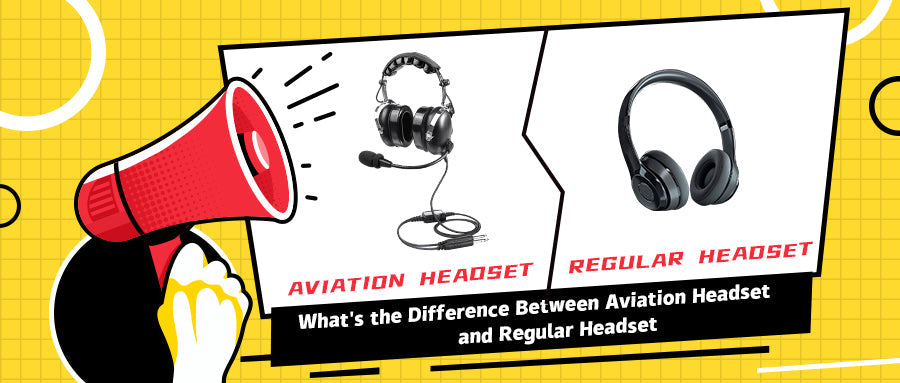
What's the Difference Between Aviation Headset and Regular Headset
Share
In modern air travel and flight operations, headsets play a crucial role. Aviation headsets differ significantly from Regular headsets in terms of design, functionality, and usage scenarios. This article delves into the key distinctions between these two types of headsets to help you understand why pilots and aviation professionals require specialized equipment.
Design and Structural Differences
Noise Isolation Performance
Aviation headsets typically feature over-ear designs with high-quality noise-isolating materials, effectively reducing aircraft engine and cabin noise (typically providing 20-30 dB of noise reduction). In contrast, while some regular headsets offer noise cancellation, most are not optimized for continuous high-frequency aviation noise.
Microphone Systems
Aviation headsets use noise-canceling microphones, combined with special wind noise reduction designs to ensure clear voice transmission in noisy environments. Regular headset microphones are primarily designed for relatively quiet settings.
Durability
Aviation headsets must comply with strict aviation standards, utilizing military-grade materials that can withstand extreme temperature variations (-40°C to +70°C), humidity changes, and intensive use. Regular headsets generally lack this industrial-grade durability.
Expected Lifespan
Aviation headsets are designed for a service life exceeding 10,000 flight hours, whereas high-quality regular headsets average 2-3 years of daily use.
Conclusion
Aviation headsets are professional devices designed for demanding flight environments, far surpassing conventional regular headsets in safety, reliability, and functionality. For average users, regular headsets are perfectly adequate. However, for aviation professionals, specialized headsets are not just about comfort—they are essential for flight safety. As technology advances, both types of headsets continue to evolve, but core differences will remain to meet the unique requirements of their respective fields.